As a construction employer, offering a competitive benefit program is crucial for attracting and retaining skilled workers. However, with so many options available, it can be challenging to determine what benefits to offer and how to ensure they are competitive. That’s where benchmarking comes in.
What is Benchmarking
Benchmarking involves comparing your construction workforce benefit program to industry standards to ensure you are providing competitive offerings. Here are five steps to help you benchmark your benefit program to industry standards.
Step 1: Identify Key Benefit Areas
The first step in benchmarking your benefit program is to identify key areas to compare. Some common areas to benchmark include health insurance, retirement plans, paid time off, training and development, bonus and incentive programs, employee assistance programs, and work-life balance initiatives. It is not necessary to have all these benefit areas and it is not advisable to try to benchmark all programs at one time. Identifying a few key areas to tackle at a one time is the best strategy to creating a practical and scalable plan for change if needed.
Health Insurance
Providing comprehensive health insurance coverage is a significant benefit for construction workers.
Retirement Plans
Offering retirement plans, such as 401(k) or pension plans, is crucial for helping workers save for their future.
Paid Time Off
Paid Time Off (PTO) policies include vacation, holidays, and sick leave. It is important to ensure workers receive appropriate time off and maintain work-life balance.
Training and Development
Construction workers value opportunities for skill development and career advancement. Training and development programs might include apprenticeship opportunities and certifications but should always ensure workers receive necessary training and growth opportunities.
Bonus and Incentive Programs
Implementing performance-based bonus and incentive programs can motivate workers and reward exceptional performance.
Employee Assistance Programs
Offering employee assistance programs (EAPs) can provide workers with resources for mental health support, counseling, and other personal challenges.
Work-Life Balance Initiatives
Work-life balance initiatives, such as flexible work schedules, remote work options, and family-friendly policies, can attract and retain workers seeking a healthy work-life balance and are increasingly important to younger generations entering the workforce.
Step 2: Collect Data
Once you have identified the key areas your company will benchmark, you will need to collect data. This can involve researching industry norms and best practices, analyzing data from surveys and studies, and reaching out to industry peers to gather information on their benefit programs. Making sure your data is accurate and correlates to what is reported for industries will help when seeking to compare your programs to those offered across the construction industry.
Step 3: Compare Your Program to Industry Standards
After collecting data, you can compare your benefit program to industry standards. This involves analyzing your benefit offerings and comparing them to what other construction companies offer. You can use data from surveys, industry reports, and other sources to determine where your benefit program falls in comparison to the industry. Additionally, serving on a committee for HR or Talent Development with an association will provide insight into industry trends and analysis of your data for your benchmarking efforts.
Step 4: Identify Gaps and Opportunities
Based on your comparison to industry standards, you can identify any gaps or areas where your benefit program may fall short. You can also identify opportunities to improve your program and offer more competitive benefits to your construction workforce.
Step 5: Make Changes
Once you have identified gaps and opportunities, you can make changes to your benefit program to align with industry standards. When looking for ways to implement changes, it is often advisable to engage those that will be rolling out the new programs to assess feasibility and structure as well as those that will be receiving the new benefits. Ensuring that everyone sees value in the change prevents the need to re-align programs that do not generate the intended impact.
Best in class Talent Management
Benchmarking your construction workforce benefit program to industry standards can help you attract and retain skilled workers and stay competitive in the labor market. By identifying gaps and opportunities and making changes to your benefit program, you can offer a more attractive package that meets the needs of your workforce.
Benchmarked programs are always the best in class and the ones that attract and retain the best talent. Construction Career Collaborative (C3) encourages you to join our Talent Management Committee to boost your efforts to benchmark and create the highest quality engagement for your construction workforce. Contact Nick Guidry at [email protected] to learn more.

